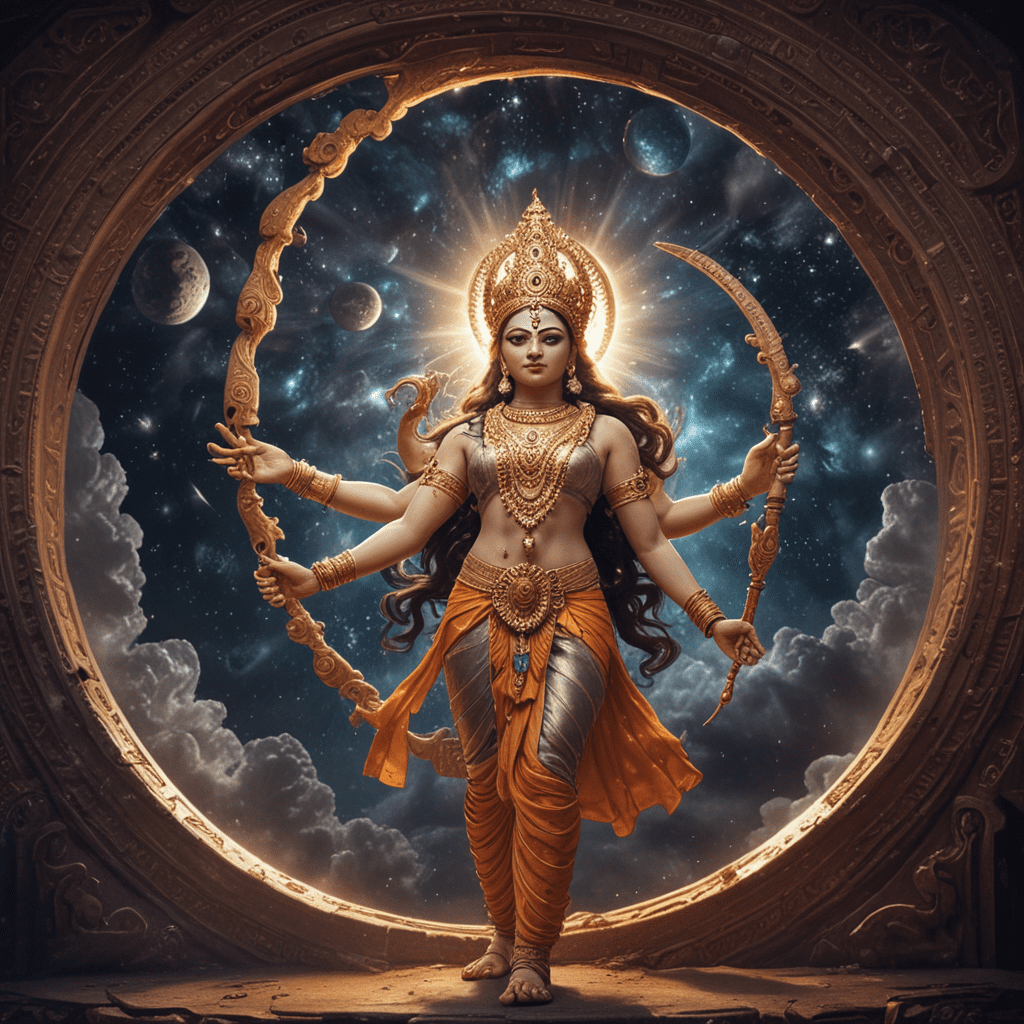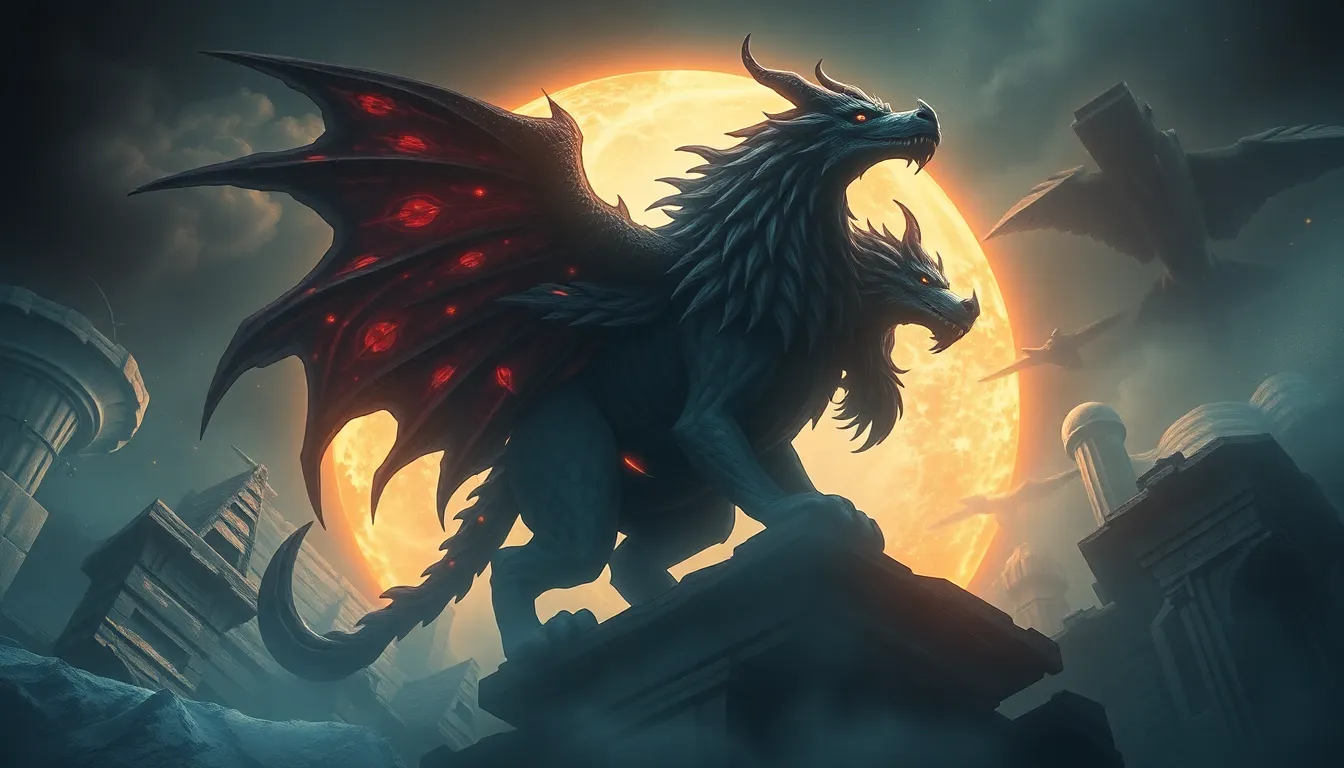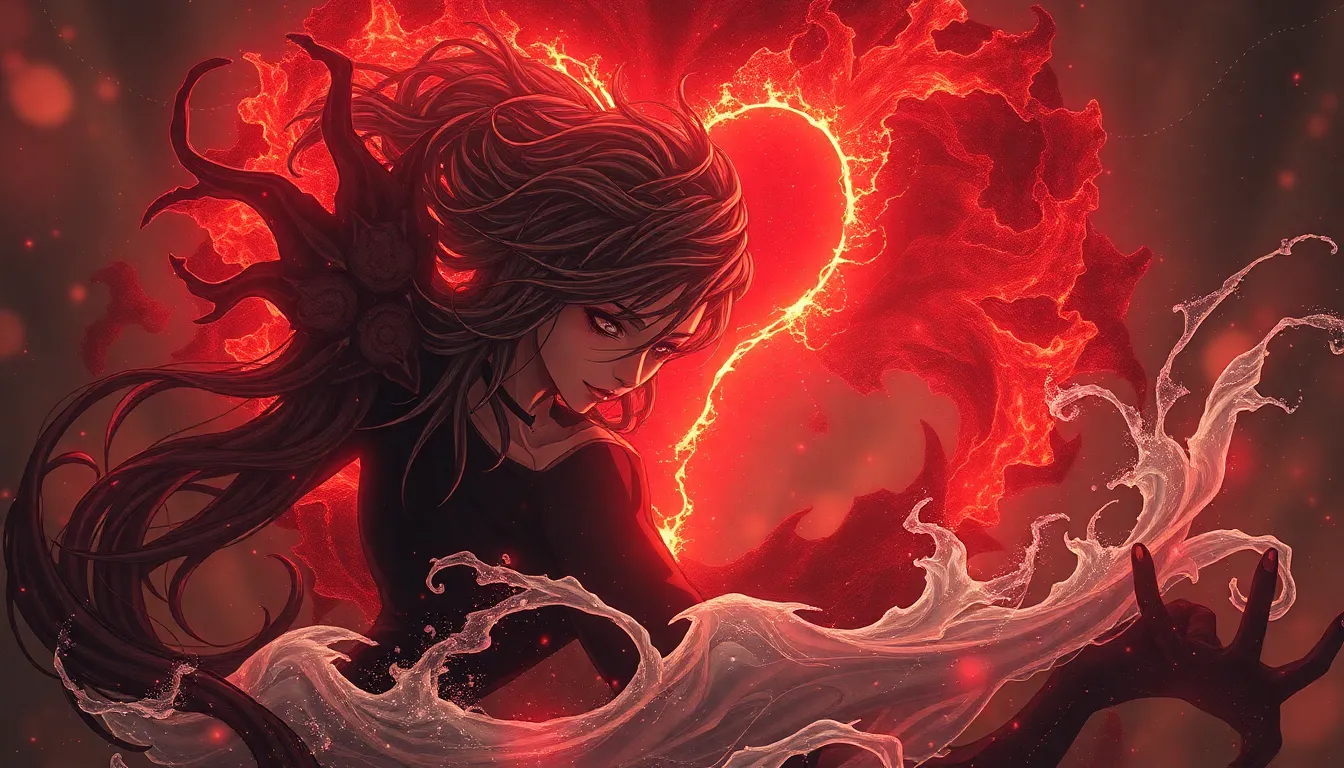The Mythical Aspects of Space in Hindu Mythology
The realm of space holds immense significance in Hindu mythology, embodying the divine and otherworldly realms that extend beyond the ordinary human experience. The cosmos is perceived as a vast, multi-layered structure featuring distinct realms, celestial beings, and symbolic elements that form an intricate tapestry of existence.
I. The Cosmos as a Hierarchical Structure
Hindu cosmology conceptualizes the universe as a hierarchical system, a grand cosmic order meticulously organized into multiple levels. Each level, known as a loka, represents a specific dimension of existence with unique characteristics and inhabitants. These lokas are arranged in ascending or descending order, with the higher realms considered more refined and closer to the divine source.
II. The Triloka: Three Cosmic Realms
At the heart of Hindu cosmology lies the concept of the Triloka, the three principal cosmic realms:
- Bhurloka: The earthly realm, the physical plane where humans and other mortal beings reside.
- Bhuvarloka: The atmospheric realm, the intermediate region between Earth and heaven, inhabited by celestial spirits and semi-divine beings.
- Svarloka: The heavenly realm, the abode of the gods, characterized by divine light, eternal bliss, and the presence of celestial beings.
III. Brahma’s Cosmic Lotus: The Center of Creation
According to Hindu myth, the universe originated from a cosmic lotus that emerged from the navel of the creator god Brahma. This lotus represents the primordial seed of creation, from which the entire cosmos unfolded. The lotus symbolizes purity, divine manifestation, and the cosmic expansion that gives rise to all existence.
IV. The Lokapalas: Guardians of the Directions
The cardinal directions are presided over by powerful deities known as the Lokapalas:
- Indra: The king of the gods, guardian of the east.
- Agni: The god of fire, guardian of the southeast.
- Yama: The god of death, guardian of the south.
- Nirriti: The goddess of destruction, guardian of the southwest.
- Varuna: The god of water, guardian of the west.
- Vayu: The god of wind, guardian of the northwest.
- Kubera: The god of wealth, guardian of the north.
- Isana: The god of lordship and yoga, guardian of the northeast.
These deities play a pivotal role in maintaining cosmic balance and protecting the stability of the universe.
VI. The Heavenly Beings: Devas and Apsaras
Hindu mythology is replete with celestial beings who reside in the heavenly realm of Svarloka. The Devas, also known as gods, are benevolent and powerful entities who embody various aspects of nature and life. They possess supernatural abilities, reside in magnificent palaces, and play a significant role in maintaining the cosmic harmony. The Apsaras, on the other hand, are beautiful and celestial maidens who serve as the dancers and entertainers in the celestial court.
VII. The Ascended Rishis: Sages and Seers
The Triloka also includes numerous planes where ascended Rishis, or sages, reside. These Rishis are highly revered in Hindu mythology for their spiritual wisdom, profound knowledge, and meditative powers. They have renounced worldly life and dedicated themselves to seeking the ultimate truth. Their presence contributes to the spiritual vibrations and blessings that permeate the cosmos.
VIII. The Celestial River Ganga
The sacred river Ganga, also known as Ganges, plays a pivotal role in Hindu mythology. It is believed to originate in the heavens and descend to the Earth, passing through the three realms of the Triloka. The Ganga represents purity, spiritual purification, and the divine grace that flows through the universe. It is a pilgrimage site for countless devotees and is considered an embodiment of the cosmic waters from which all life emerged.
IX. Mount Meru: The Cosmic Axis
Mount Meru, also known as the Sacred Mountain, is considered the center of the universe and the axis around which the cosmos revolves. It is the abode of the gods and is described as a towering mountain of gold with multiple peaks and celestial palaces. The celestial city of Amaravati, the residence of Lord Indra, is located on the summit of Mount Meru. It symbolizes the cosmic pillar that connects the heavens, Earth, and the underworld, representing the unity and interconnectedness of the universe.
X. The Mythical Aspects of the Zodiac and Constellations
Hindu mythology assigns deep significance to the zodiac and celestial constellations. The twelve signs of the zodiac are associated with divine beings, animals, and mythical stories. Each sign is believed to have an influence on the fate and characteristics of individuals born under it. The position of the planets and stars during a person’s birth is considered crucial in determining their destiny and personality traits. Celestial constellations are also revered as representations of divine figures and mythological events, adding to the rich tapestry of Hindu mythology.
FAQs
1. What is the concept of the Triloka in Hindu mythology?
The Triloka represents the three principal cosmic realms: Bhurloka (Earthly realm), Bhuvarloka (Atmospheric realm), and Svarloka (Heavenly realm). These realms embody different dimensions of existence with unique characteristics and inhabitants.
2. Who are the Lokapalas and what role do they play?
The Lokapalas are powerful deities who guard the eight cardinal and intermediate directions of the universe. They are responsible for maintaining cosmic balance and protecting the stability of the universe.
3. What significance does Mount Meru hold in Hindu mythology?
Mount Meru is the cosmic axis, the center of the universe and the abode of the gods. It is the cosmic pillar that connects the heavens, Earth, and the underworld, symbolizing the unity and interconnectedness of the universe.
4. How are celestial bodies like the zodiac and constellations integrated into Hindu mythology?
The twelve signs of the zodiac are associated with divine beings, animals, and mythical stories. Celestial constellations are revered as representations of divine figures and mythological events, adding to the rich tapestry of Hindu mythology.



